My group is interested in the development of functional nanostructured materials for catalytic, electrocatalytic, photocatalytic, organic, and energy applications through unique tools including chemical synthesis, surface functionalization, ball-milling, ALD and self-assembly techniques. By producing nanomaterials ensembles with well-controlled overall size, composition, 3-D arrangement, porosity, and surface properties.
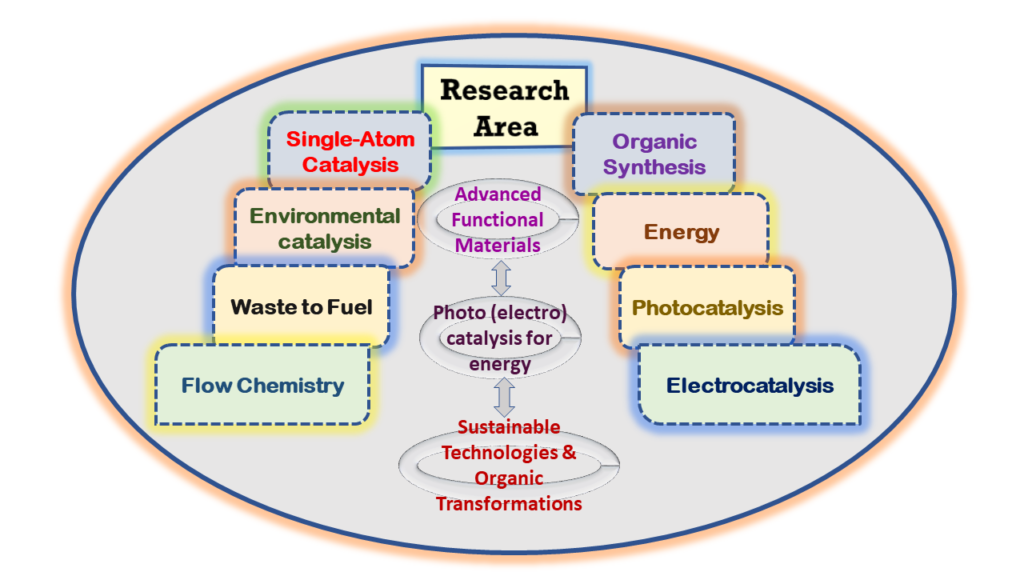
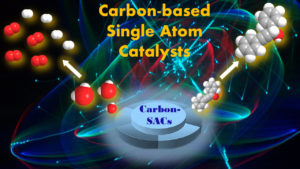
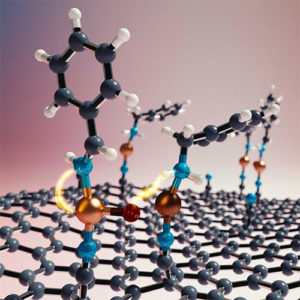
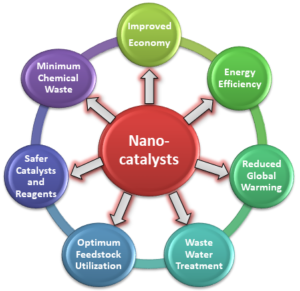
Applications: The ascent of these complex topics over the last few years has enabled chemists to understand traditional catalysts from a new perspective. The aim of these emerging research areas is to design the materials based on highly important targeted catalytic, selective organic transformations, flow reactions, photocatalysis, electrocatalysis, energy and environmental sustainability.
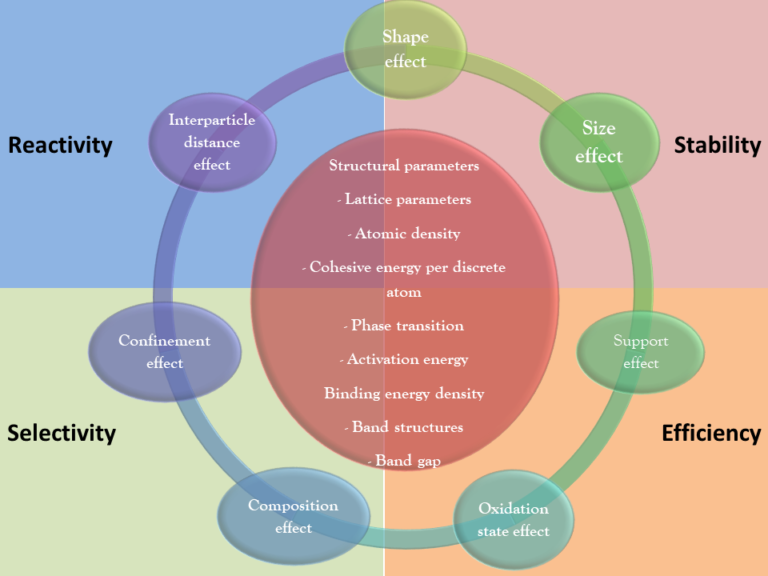
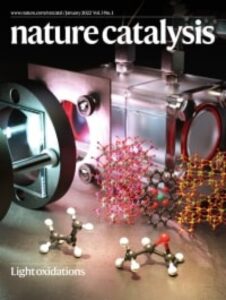
1. Silica-supported Fe/Fe–O nanoparticles for the catalytic hydrogenation of nitriles to amines in the presence of aluminium additives
Vishwas G. Chandrashekhar, Thirusangumurugan Senthamarai, Ravishankar G. Kadam, Ondřej Malina, Josef Kašlík, Radek Zbořil,* Manoj B. Gawande*, Rajenahally V. Jagadeesh* and Matthias Beller*
Nature Catalysis, 2021,DOI: 10.1038/s41929-021-00722-x (IF-41.81)
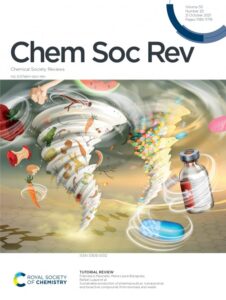
2. Silver nanomaterials: synthesis and (electro/photo) catalytic applications
Rakesh Kumar Sharma,* Sneha Yadav, Sriparna Dutta, Hanumant B. Kale, Indrajeet R. Warkad, Radek Zbořil, Rajender S. Varma* and Manoj B. Gawande*
Chemical Society Reviews, 2021,50, 11293-11380 (IF– 54.56)
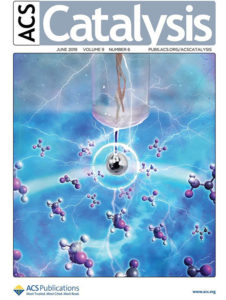
3. Carbon-based Single Atom Catalysts for Advanced Applications
Manoj B. Gawande,* Paolo Fornasiero and Radek Zbořil*
ACS Catalysis, 2020, 10, 2231-2259 (IF-13.08)
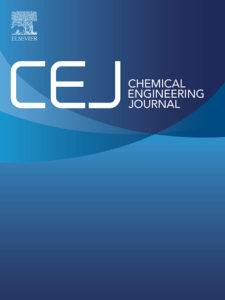
4. Fe(0)-embedded thermally reduced graphene oxide as efficient nanocatalyst for reduction of nitro compounds to amines
Anandarup Goswami, Ravishankar G. Kadam, Jiří Tuček, Zdeněk Sofer, Daniel Bouša, Rajender S. Varma, Manoj B. Gawande,* Radek Zbořil*
Chemical Engineering Journal, 2020, 382, 122469 (IF-13.27)
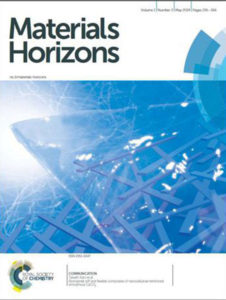
5. Recent development of covalent organic frameworks (COFs): synthesis and catalytic (organic-electro-photo) applications
Rakesh Kumar Sharma, * Priya Yadav, Manavi Yadav, Radhika Gupta, Pooja Rana, Anju Srivastava, Radek Zboril,Rajender S. Varma,* Markus Antonietti and Manoj B. Gawande*
Mater. Horiz., 2020,7, 411-454 (IF-13.26)
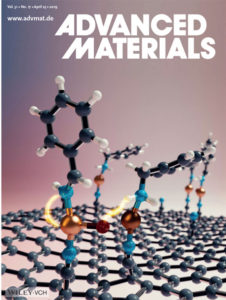
6. Mixed-valence single-metal-ion catalyst derived from functionalized graphene
Aristides Bakandritsos, Ravishankar G. Kadam, Pawan Kumar, Giorgio Zoppellaro, Miroslav Medveď,Jiri Tucek, Tiziano Montini, Ondřej Tomanec, Pavlína Andrýsková, Bohuslav Drahoš, Rajender S. Varma,Michal Otyepka, Manoj B. Gawande,* Paolo Fornasiero* and Radek Zbořil*
Advanced Materials, 2019, 1900323. Inside Cover Page (IF-30.84)
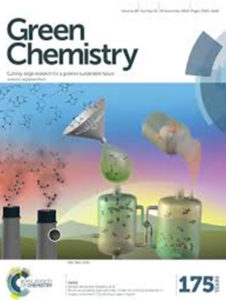
7. Cobalt-entrenched N-, O-, and S-tridoped carbons as efficient multifunctional sustainable catalysts for base-free selective oxidative esterification of alcohols
Devaki Nandan, Giorgio Zoppellaro, Ivo Medřík, Claudia Aparicio, Pawan Kumar, Martin Petr, Ondřej Tomanec, Manoj B. Gawande,* Rajender S. Varma and Radek Zbořil*
Green Chemistry, 2018, 20, 3542-3556 (IF-10.18)
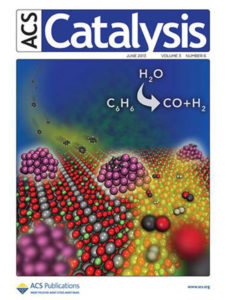
8. Ag@CoxP Core-Shell Heterogeneous Nanoparticles as Efficient Oxygen Evolution Reaction Catalysts
Yuhui Hou, Yipu Liu, Ruiqin Gao, Qiuju Li, Huizhang Guo, Anandarup Goswami, Radek Zbořil, Manoj B. Gawande,* and Xiaoxin Zou*
ACS Catalysis, 2017, 7, 7038–7042 (IF- 13.08)
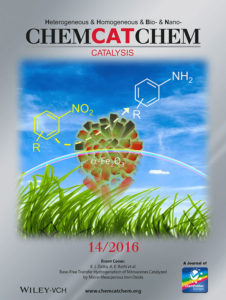
9. Base-free Transfer Hydrogenation of Nitroarenes Catalyzed by Micro-mesoporous Iron Oxide
Kasibhatta J. Datta, Anuj K. Rathi, Manoj B. Gawande,* Vaclav Ranc, Giorgio Zoppellaro, Rajender S. Varma, Radek Zbořil*
ChemCatChem, 2016, 8, 2351–2355. (IF- 5.68); Citations- 36
Selected for Front cover
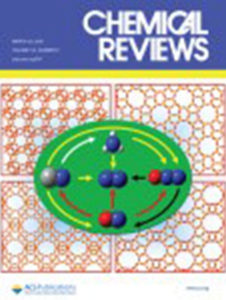
10. Cu and Cu-based nanoparticles: Synthesis and Applications in Catalysis
Manoj B. Gawande,* Anandarup Goswami, François-Xavier Felpin, Tewodros Asefa, Xiaoxi Huang, Rafael Silva, Xiaoxin Zou, Radek Zbořil, and Rajender S. Varma*
Chemical Reviews, 2016, 116 (6), 3722–3811. (IF- 60.62); Citations- more than 1572 citations
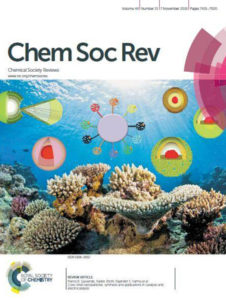
11. Core-shell Nanomaterials: Synthesis and Applications in Catalysis and Electrocatalysis
Manoj B. Gawande,* Anandarup Goswami, Tewodros Asefa, Huizhang Guo, Ankush V. Biradar Dong-Liang Peng, Radek Zbořil and Rajender S. Varma*
Chemical Society Reviews, 2015, 44, 7540-7590. (IF- 54.56); Citations- 500
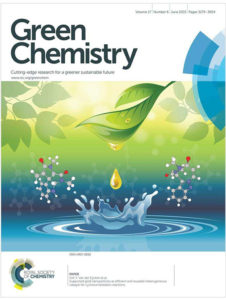
12. Silica-nanosphere-based organic–inorganic hybrid nanomaterials: synthesis, functionalization and applications in catalysis
R.K. Sharma,* Shivani Sharma, Sriparna Dutta, Radek Zbořil, Manoj B. Gawande*
Green Chemistry, 2015, 17, 3207-3230. (IF- 10.18); Citations- 178
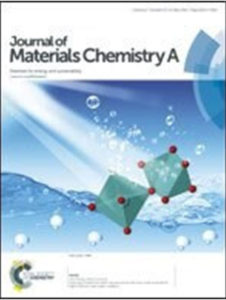
13. Integrated Nanocatalysts: A Unique Class of Heterogeneous Catalysts
Manoj B. Gawande,* Radek Zbořil, Victor Malgras, and Yusuke Yamauchi
Journal of Materials Chemistry A, 2015, 3, 8241-8245. (IF- 12.73); Citations- 41
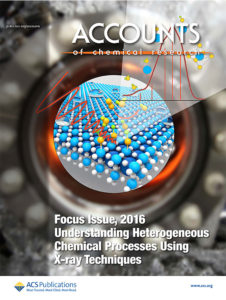
14. Microwave-Assisted Chemistry: Synthetic Applications for Rapid Assembly of Nanomaterials and Organics
Manoj B. Gawande,* Sharad Shelke, Radek Zbořil, and Rajender S. Varma*
Account of Chemical Research, 2014, 47, 1338−1348. (IF= 22.38); Citations- 507
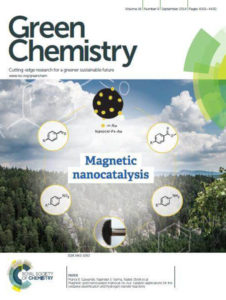
15. Magnetic gold nanocatalyst (nanocat-Fe–Au): catalytic applications for the oxidative esterification and hydrogen transfer reactions
Manoj B. Gawande,* Anuj K. Rathi, Jiri Tucek, Klara Safarova, Nenad Bundaleski, Orlando M. N. D. Teodoro, Libor Kvitek, Rajender S. Varma, and Radek Zbořil*
Green Chemistry, 2014, 16, 4137-4143. (IF- 10.18); Citations- 68
Inside Front cover- http://pubs.rsc.org/en/content/articlepdf/2014/gc/c4gc00774c.
Our group is interested in developing novel nanomaterials that can employ in the advanced catalytic, photocatalytic, organic and energy (gas phase reactions and electrocatalysis) applications. We are also interested in the synthesis of industrial important organic intermediates and biologically active molecules.
Institute of Chemical Technology Mumbai-Marathwada Campus, Jalna, Maharashtra 431203 India.
